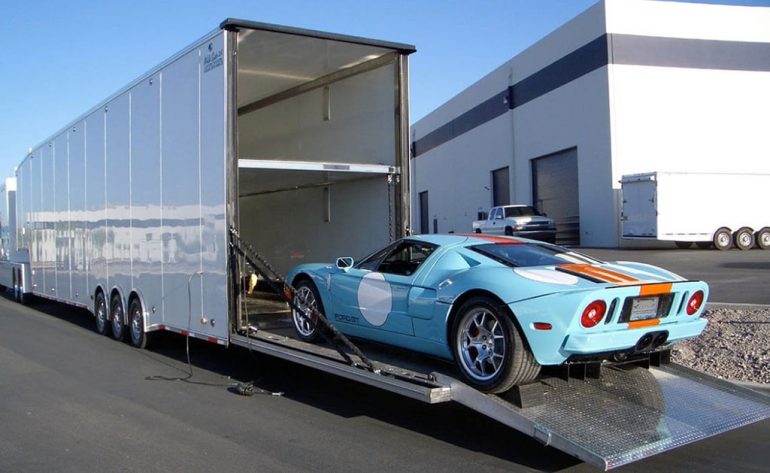
Open-air carrier car shipping is a common method of transporting vehicles where the cars are loaded onto an open trailer for transit. This approach is widely used for its cost-effectiveness and efficiency in moving multiple vehicles simultaneously. During open-air transport, vehicles are exposed to the elements and environmental factors such as weather conditions, road debris, and dust.
The open-air method suits standard vehicles and those seeking a more budget-friendly shipping option. While it might not provide the same level of protection as enclosed carrier shipping, it remains a practical choice for many due to its affordability and convenience.
It’s essential to consider the nature of the vehicle being transported when opting for open-air carrier car shipping. While the risks of exposure are present, reputable transport companies take measures to secure vehicles properly and mitigate potential damage. Understanding the basics of open-air carrier car shipping helps vehicle owners weigh the pros and cons of this method against their individual needs, budget, and the condition of the vehicle, ensuring a well-informed decision when choosing the appropriate car shipping approach.
Enclosed carrier car shipping is a specialized vehicle transport method providing extra protection and security during transit. Unlike open-air carrier shipping, where vehicles are exposed to the elements and potential road debris, enclosed carrier shipping involves transporting vehicles within a fully enclosed trailer. This method is particularly popular for high-value, luxury, classic, and exotic cars and vehicles with sentimental or historical significance.
The enclosed carrier option shields vehicles from varying weather conditions, such as rain, snow, and intense sunlight, which can potentially cause damage or wear over extended journeys. Moreover, the sealed environment safeguards against dust, dirt, and debris, ensuring the vehicle arrives at its destination in the same pristine condition as when it was loaded.
While enclosed carrier car shipping offers undeniable benefits in terms of protection, it’s important to note that it generally comes at a higher cost compared to open-air transport due to the specialized equipment and added security measures. Understanding the basics of enclosed carrier car shipping allows vehicle owners to make informed decisions when selecting the right shipping method for their unique needs, whether it’s prioritizing maximum protection or considering other factors like budget and timeline.
When faced with the decision between enclosed and open-air car shipping, several crucial factors come into play to help you make the right choice for your vehicle’s transport needs. Consider the type and value of the vehicle you’re transporting. Luxury, classic, antique, and high-value vehicles often benefit from enclosed carrier shipping due to the extra protection from potential damage caused by weather, debris, and road conditions. For standard vehicles, open-air shipping might be a cost-effective solution. Think about the weather conditions during the transport period. Suppose you’re moving during harsh weather, such as winter snowstorms or heavy rain. In that case, enclosed shipping can shield your vehicle from potential damage caused by these elements.
If you prioritize maximum protection for your vehicle, enclosed carrier shipping is the way to go. The sealed trailer protects your vehicle from external factors like dust, dirt, and road debris. For added security, enclosed carriers also often come equipped with advanced tracking systems. Your budget plays a significant role in your decision-making process. Enclosed carrier shipping tends to be more expensive due to its enhanced protection. While more affordable, open-air shipping still provides adequate protection for most standard vehicles.
Assess the current condition of your vehicle. Open-air shipping might be a suitable choice if it’s already well-worn or a daily driver. However, if your vehicle is newly purchased, pristine, or holds sentimental value, the investment in enclosed shipping could be worthwhile. Consider your transportation timeline. Enclosed carriers might offer more precise scheduling and delivery windows due to the exclusive nature of the service. Due to its popularity and efficiency, open-air transport can sometimes provide more flexible departure and arrival dates. Finally, evaluate your peace of mind throughout the transport process. If knowing that your vehicle is sheltered and secure is essential, then enclosed carrier shipping can offer that peace of mind.

Automotive Addicts Contributors are a collective of guest writers, industry professionals, and passionate enthusiasts who bring fresh perspectives to the Automotive Addicts platform. Focused on delivering timely news, in-depth reviews, and unique insights, these contributors help keep the site dynamic and engaging. Many use the platform to expand their reach and build credibility within the automotive media world, adding depth and variety to the content that drives the Automotive Addicts community.